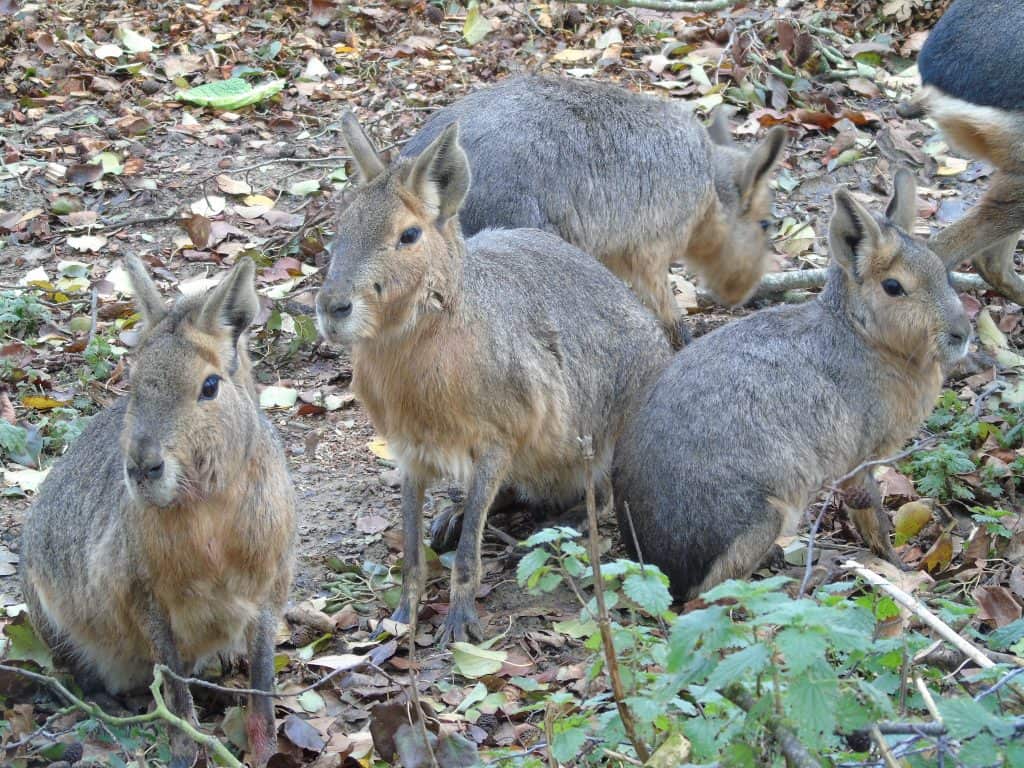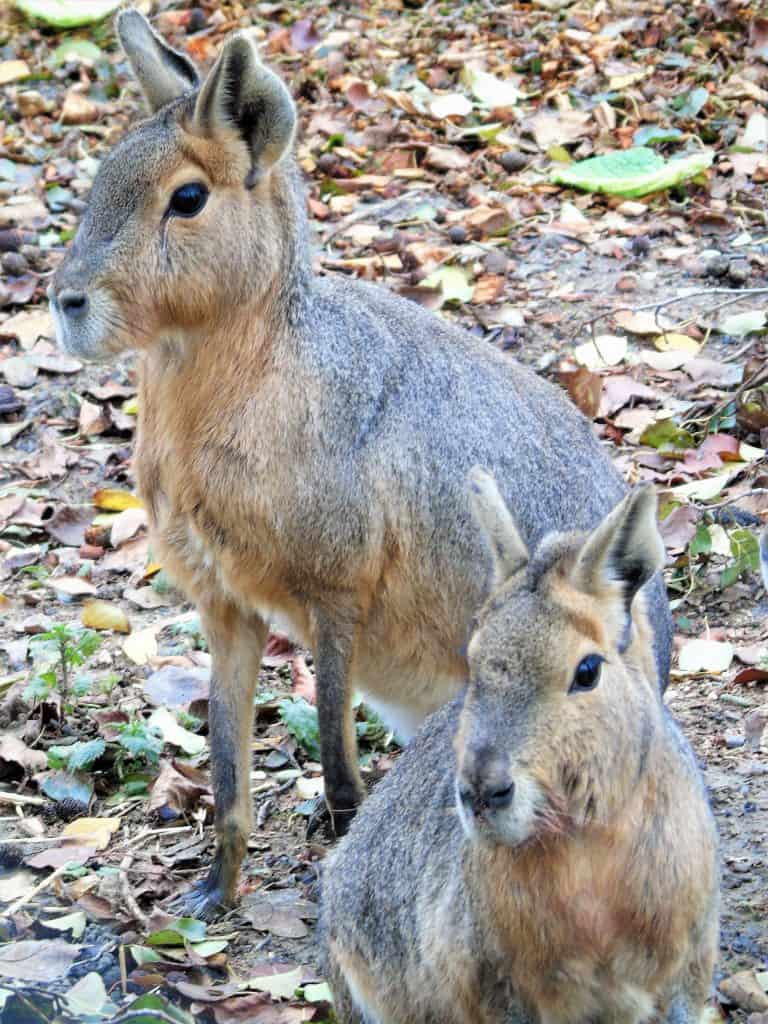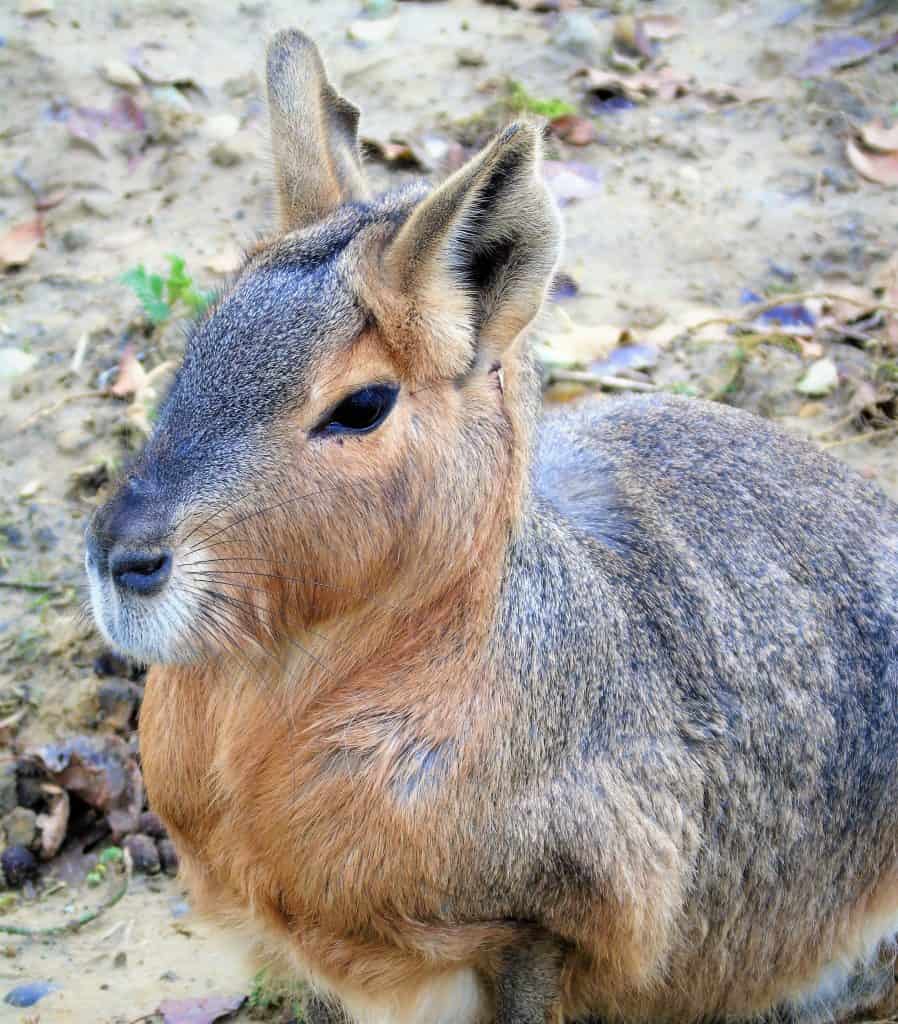It’s always exciting when you’ve got new animal arriving at the park. Recently, we welcomed a group of 12 Patagonian Maras!

I’ve previously never worked with Mara so it’s a first for me, as a zookeeper. I’ve always found myself going to other zoos and learning about the different animals they have. Or, in my spare time reading up on animal husbandry and behaviour. It’s always a good idea for what’s in store if and when they arrive.
Patagonian Maras or cavies (which they are also known as) are long legged rodents with long ears resembling a hare and a body similar to small deer. Their coats which are stiff, dense and very fine in texture are mostly grey/brown, with a white patch along the chest and stomach. They also have orange coloration around their flanks and head.

In the wild they would inhabit central and southern Argentina. Their preference is arid grasslands and brushlands which offers them open space. The home range of a Mara pair can fluctuate greatly depending upon food availability. Maras move in a variety of ways, walking, hopping in a rabbit-like fashion, galloping and can travel at speeds of up to 20mph.
Unlike like many other rodents they are diurnal, the daytime hours are spent on foraging trips. Usually preferring to graze on grounds that are rich with vegetation and they will gather in settlements living in warrens or den systems. Small warrens are used by a single pair. Whereas big ones may be used by up to 29 pairs simultaneously.
Mara Reproduction
Mara are monogamous meaning they form a bond for life, with the male aggressively protecting his mate from rivals and predators. Female Mara are ready to mate every 3-4 months but for a window of only 30 minutes. Their gestation period lasts around 100 days, with them typically giving birth to one to three well developed young.

Most Maras in the wild produce only one litter annually, whereas Maras in captivity can give birth three to four times each year. Young pups can walk soon after birth and are moved to communal underground dens known as crèches. This can be home to the pups of as many as 15 pairs but females care solely for their own young which they recognise by smell. Mothers take on almost all direct care of their young, the males serve as sentries and protect the den from potential predators. Young Maras will nurse for much longer than most other rodent species, roughly 75 days before being weaned. Females become mature at around three months while males reach maturity at six months. They have a lifespan of 14 years in captivity.

Diets
They are strict herbivores, mainly eating grasses and cacti as well as some seeds, fruits and flowers. The cacti are likely a main source of water through the year as rainfall can be unpredictable and cacti are around 75% water. Maras are also coprophagous, ingesting their own dung to maximize nutrient absorption. At Wingham they are fed on greens, vegetables and hay.
Threats to Maras
Listed as near threatened on the IUCN Red List, Patagonian Maras occur in at least 12 protected areas within their native range. The South American lowlands in which they reside are known as the Pampas. This habitat is rapidly declining due to hunting and habitat loss. The Argentinian agriculture industry has reduced the amount of available habitat for Maras, as grasslands are converted into pastures. Sheep farming has resulted in competition for resources among the two herbivorous species. They are also hunted for their skins.

Have you been to see them yet? If not you can spot them on the lake, opposite our pumas.


